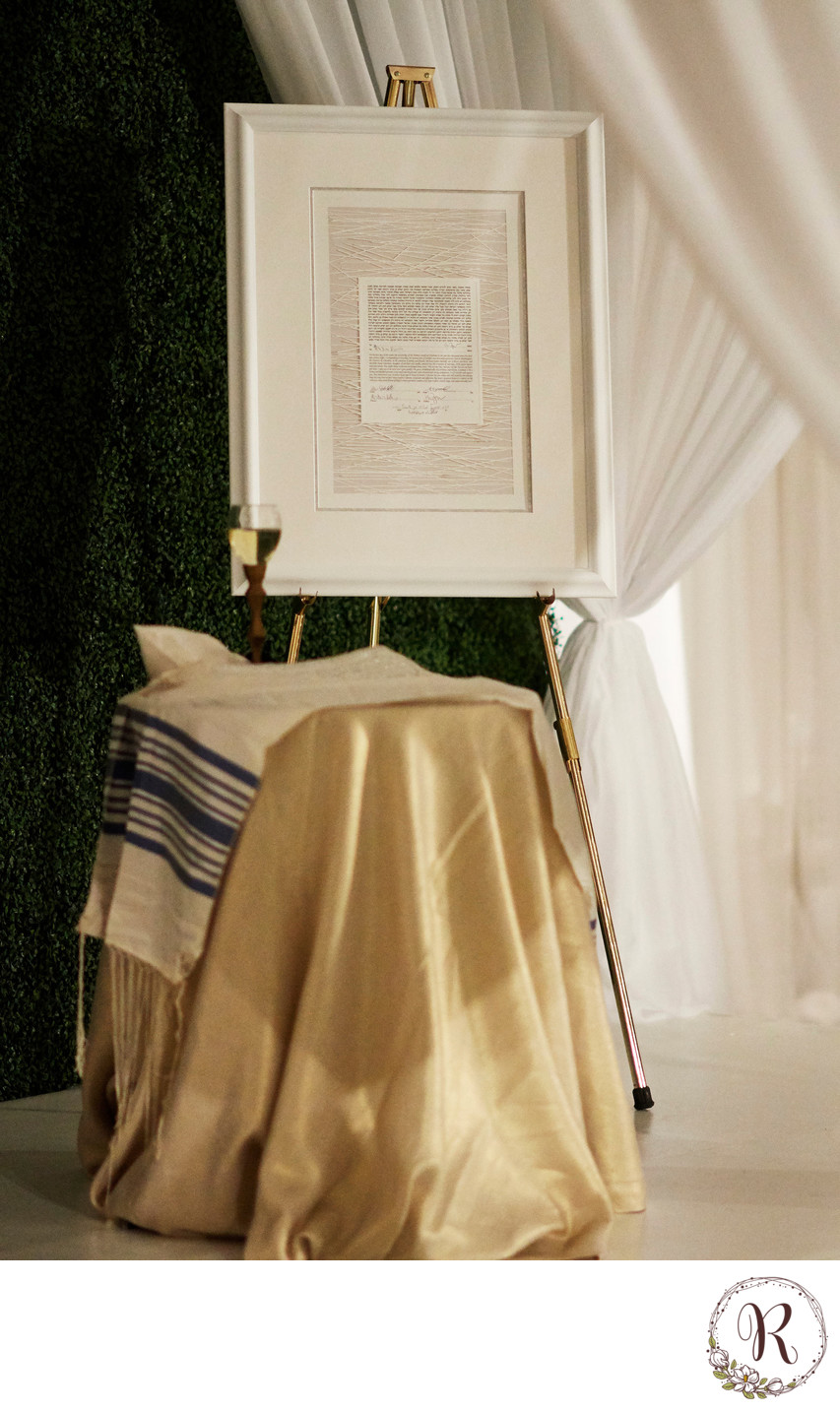
Sacred elements of the Jewish wedding ceremony presented at the Fairmont Hotel in Washington DC. For those unfamiliar with the Jewish traditions there are two major sections, the erusin (betrothal) and the nissuin (marriage). The main part of erusin is the exchange of rings. The main part of nissuin are the seven wedding blessings. They take place one after the other, together they make up the Jewish wedding ceremony or service as some refer to it. There are many ways to personalize your wedding ceremony. Elements from other religious traditions such as the merging of South Asian India customs and traditional Jewish customs and oddly enough both take place under a very similar structure.
There are no set rules regarding the processional, just customs, offering interfaith couples the chance to truly make thier ceremonies their own including traditions from other faiths and cultural elements.
In traditional Jewish weddings the entire wedding party processes down the aisle, with the rabbi going first or simply starting the ceremony waiting at the chuppah (wedding canopy). It is traditional for the bride and her parents to stop before arriving at the chuppah and for the groom to walk to the bride, and then walk together with her under the chuppah. The bride then stands to the groom’s right.
In traditional Jewish heterosexual weddings, at the end of the processional, when the couple has arrived at the chuppah (wedding canopy), the bride walks slowly around the groom, circling him seven times. Circling symbolizes the creation of a new home and the intertwining of the lives of both partners. Traditionally, circling has also been seen as the symbolic transfer of the bride from her father’s house to her husband’s house.
The circling is usually done while music is playing, before the couple enter under the chuppah together.
After a brief welcome, the ceremony typically begins with a blessing of the first of two cups of wine (or grape juice). A second blessing is also recited before the couple sips the wine. After reciting the blessing(s) the rabbi invites the couple to sip from the cup. Traditionally, the rabbi gives the cup of wine to the groom, who sips from it, and then the cup is presented to the bride.
Wedding rings symbolize their love and commitment, when exchanging rings, each partner recites a verse expressing their commitment to one another.
The second part of the ceremony typically begins with the seven wedding blessings, including the second blessing of the wine. The seven blessings give thanks for the joys of love, intimacy and marriage, for the creation of humanity and for the community’s happiness.
Most Jewish officiants sing the blessings in the original Hebrew and translate each blessing into English. The first of the seven blessings is the blessing over a second cup of wine, and after all of the blessings are recited the couple is invited to take a sip.
Jewish weddings end with the "breaking of a glass" wrapped in clothe. The groom will stomp his foot down on a thin glass and end their ceremony with their first kiss followed by a loud cheer of "Mazel tov!"
At the end of the ceremony, couples typically walk back down the aisle, and often retreat to be alone during yichud (seclusion) after the ceremony. Some of our South Asian Indian couples marrying inter-faith tend to decide to have separate wedding ceremonies in order to allow both of their traditions to be fully appreciated.
Location: Fairmont Hotel, 2401 M Street NW, Washington District of Columbia, United States 20037.
Keywords: Fairmont Hotel (21), Jewish Wedding (38), Ketubah (2).| DC Wedding Photographer | Indian Wedding Photographer | Destination Wedding Photographer | Destination Hindu Wedding Photographer | Destination South Asian Wedding Photographer | Telugu Wedding Photographer | Top South Asian Wedding Photographer |
| (703) 314 7861 - info@regetis.com |